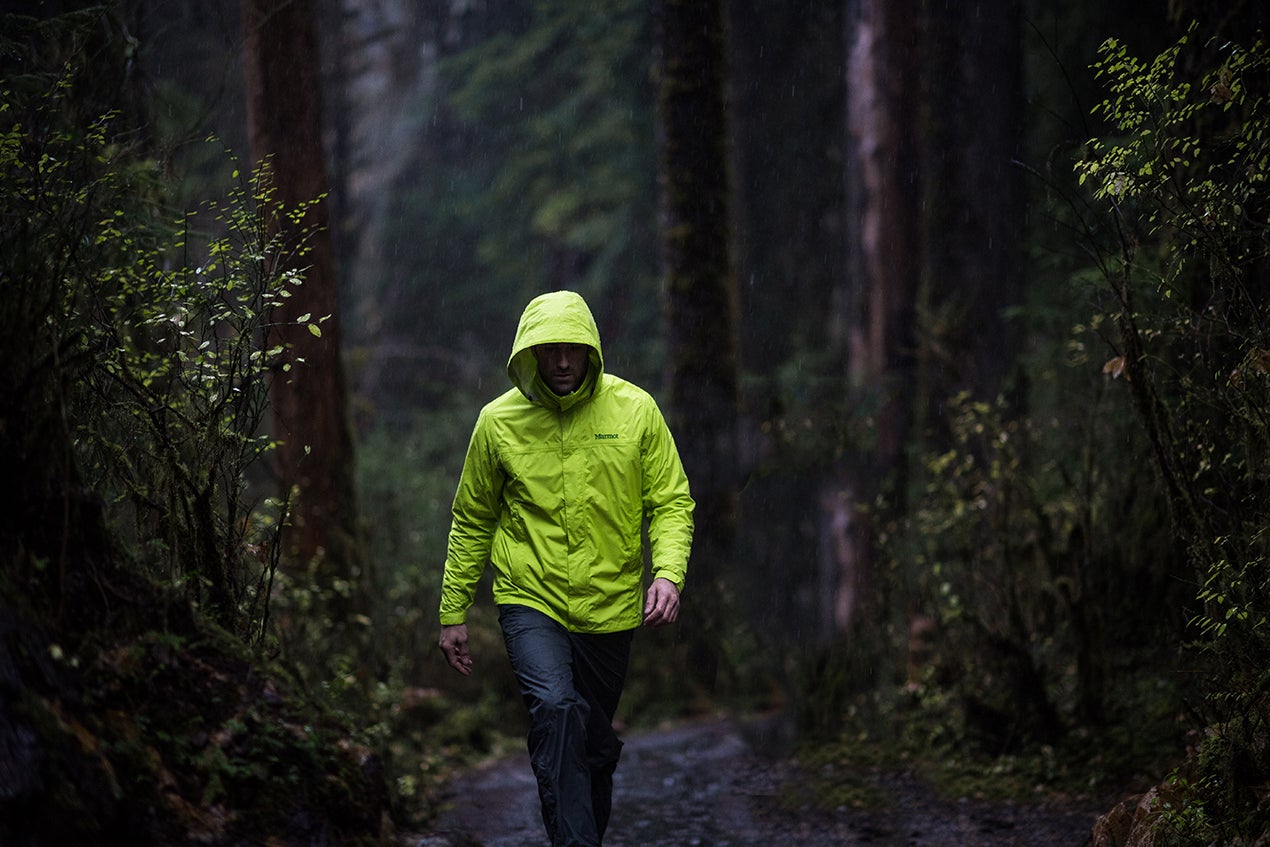Wearing Your Raingear Like a Pro

Fabric matters.
Choose layers that work together to channel perspiration and condensation away from your skin so you don’t feel clammy and gross. Don’t wear a cotton tank under a wool midlayer, for example, or vice-versa: wool wicks moisture away from your skin, and cotton doesn’t. Mixing these layers inhibits wool’s natural wicking and insulating properties.
Half-zips are key.
The more opportunities you have to vent, the better. Choose layers with half- or quarter-length zippers to release heat from your core so you don’t overheat.
Use your pit zips.
Unless you’re hiking in horizontal rain, keeping your pits unzipped isn’t likely to expose you to too much, if any, water. Don’t use these vents sparingly. They’re there to keep you cool and allow water vapor to escape before you drench your layers in sweat. You’ll stay drier if you use pit zips over the main zipper on your rain shell, and you’ll find them to be more comfortable and less noticeable than you might assume at first.
Get a cold start.
If you’re warm and cozy when you start your hike, you’re doing it all wrong. The minute you take your first few steps,you’ll overheat and have to shed a layer or two. Better to start off a bit cold and motivate yourself to get moving than to have to stop five minutes into your hike to expose yourself – and the inside of your pack — to the rain.
Waterproof breathables are everything.
Make sure you choose a rain shell that breathes as well as it keeps you dry, like Marmot’s EVODry Eclipse jacket. Bonus: its fabric comes with enough stretch that you’ll feel like you’re just wearing another light layer rather than a rain shell you want to jettison as soon as possible.
Wear water-resistant gloves.
Find a lightweight pair that’s waterproof, has decent water resistance, or is at least made of a fabric that insulates while wet. You don’t want to end up walking around with sponges for hands.
Bring a drybag for wet layers.
Remember that anything wet you put into your pack will make everything else damp, too. No one wants to change into wet layers — so separate your rainy clothes from your precious dry ones.
Tuck in your shirt.
Longer layers that hang below the hem of your rain shell will soak up water — and allow it to travel up the fabric and dampen your other layers. Tuck layers into your rain pants or tighten the hem of your rain jacket to make sure the rain can’t reach them.
Stay dry on your next adventure with EVODry raingear, which redefines wet-weather performance and sustainability with Marmot’s revolutionary new technology. www.marmot.com